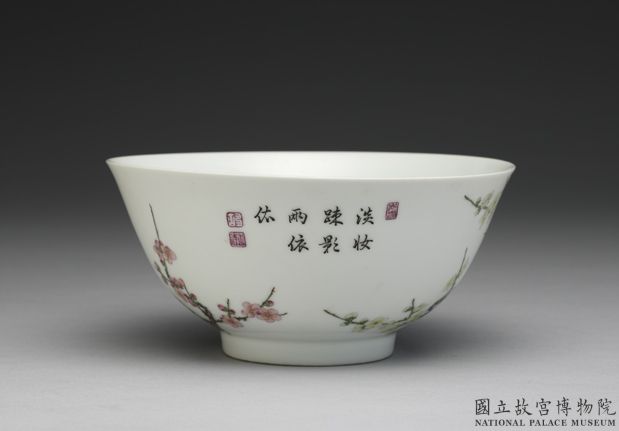Period:Yuan dynasty Production date:1300-1400 (circa)
Materials:porcelain
Technique:impressed, celadon-glazed,
Subjects:vajra
Dimensions:Diameter: 20.50 centimetres
Description:
Porcelain dish with impressed design and green glaze. This dish has rounded sides everted slightly at the lip and a broad base. The foot ring and base are glazed apart from a wide firing ring which has reoxidized red-brown. The centre of the dish is decorated with an impressed crossed vajra design known as ‘visvavajra’; the well is incised with flower scrolls.
IMG
![图片[1]-dish BM-1973-0726.315-China Archive](https://chinaarchive.net/Yuan dynasty/Ceramics/mid_00274415_001.jpg)
Comments:Harrison-Hall 2001:The vajra symbolizes the Buddhist thunderbolt. Similar decorative designs of double vajras may be seen in an architectural context as ornament for ceilings in Yuan period Tibetan Buddhist temples. In addition to this the design is used on ceramics at Jingdezhen, as evidenced by a Yuan dynasty ‘shufu’-type dish with a vajra design in the British Museum (BM 1973.0726.356) and a blue-and-white dish with vajra in the Victoria and Albert Museum, London. Some scholars nave suggested that such pieces were made in the early Ming era and indeed a Iarger dish with a similar faded dull green glaze and with impressed decoration of crossed vajras wasexcavated in the tomb of Mme Ye (1356-1418), the wife of Song Sheng, the Marquis of Xining. However, her tomb also contained many Yuan era ceramics and similarities with Yuan blue-and-white wares and ‘shufu’ items (see BM 1973.0726.356) indicate an early fourteenth-century date. Such dishes were also exported to the Middle East. A similar dish is in the Sadberk Hanim Museum, Istanbul, and two others are in the Topkapi Saray Museum in Istanbul.
Materials:porcelain
Technique:impressed, celadon-glazed,
Subjects:vajra
Dimensions:Diameter: 20.50 centimetres
Description:
Porcelain dish with impressed design and green glaze. This dish has rounded sides everted slightly at the lip and a broad base. The foot ring and base are glazed apart from a wide firing ring which has reoxidized red-brown. The centre of the dish is decorated with an impressed crossed vajra design known as ‘visvavajra’; the well is incised with flower scrolls.
IMG
![图片[1]-dish BM-1973-0726.315-China Archive](https://chinaarchive.net/Yuan dynasty/Ceramics/mid_00274415_001.jpg)
Comments:Harrison-Hall 2001:The vajra symbolizes the Buddhist thunderbolt. Similar decorative designs of double vajras may be seen in an architectural context as ornament for ceilings in Yuan period Tibetan Buddhist temples. In addition to this the design is used on ceramics at Jingdezhen, as evidenced by a Yuan dynasty ‘shufu’-type dish with a vajra design in the British Museum (BM 1973.0726.356) and a blue-and-white dish with vajra in the Victoria and Albert Museum, London. Some scholars nave suggested that such pieces were made in the early Ming era and indeed a Iarger dish with a similar faded dull green glaze and with impressed decoration of crossed vajras wasexcavated in the tomb of Mme Ye (1356-1418), the wife of Song Sheng, the Marquis of Xining. However, her tomb also contained many Yuan era ceramics and similarities with Yuan blue-and-white wares and ‘shufu’ items (see BM 1973.0726.356) indicate an early fourteenth-century date. Such dishes were also exported to the Middle East. A similar dish is in the Sadberk Hanim Museum, Istanbul, and two others are in the Topkapi Saray Museum in Istanbul.
© Copyright
The copyright of the article belongs to the author, please keep the original link for reprinting.
THE END





